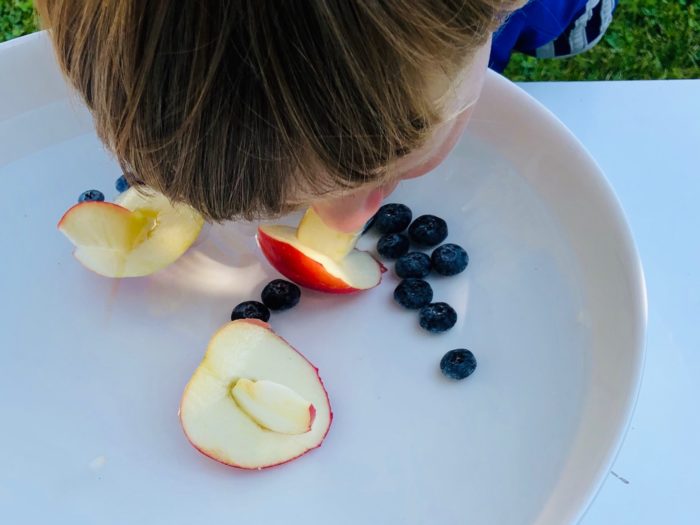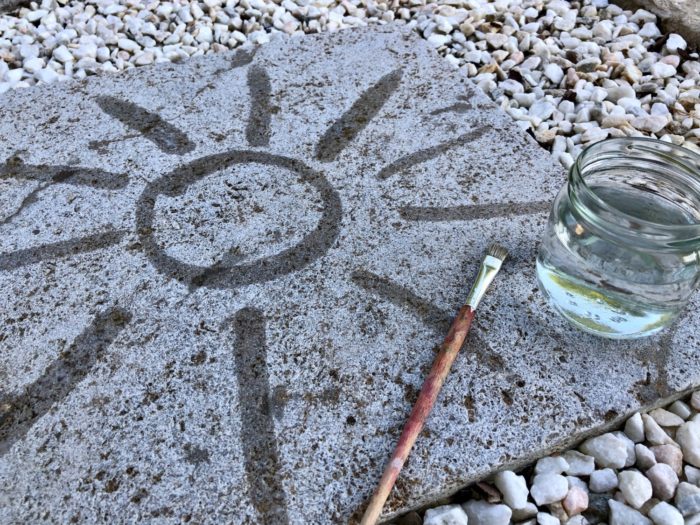What does a toy excavator cost? Playing money is not only suitable for paying in the children's shop, but also to learn how to handle money and to learn how to count and calculate. Children first get to know the coins and only afterwards the banknotes. You can easily make this play and calculation money yourself and/or you can also order it free of charge. Here you will find out both and we will show you small tasks to learn how to handle money.
Media Education for Kindergarten and Hort

Relief in everyday life, targeted promotion of individual children, independent learning and - without any pre-knowledge already usable by the youngest!

First find all the materials together and lay out the painting sheet.
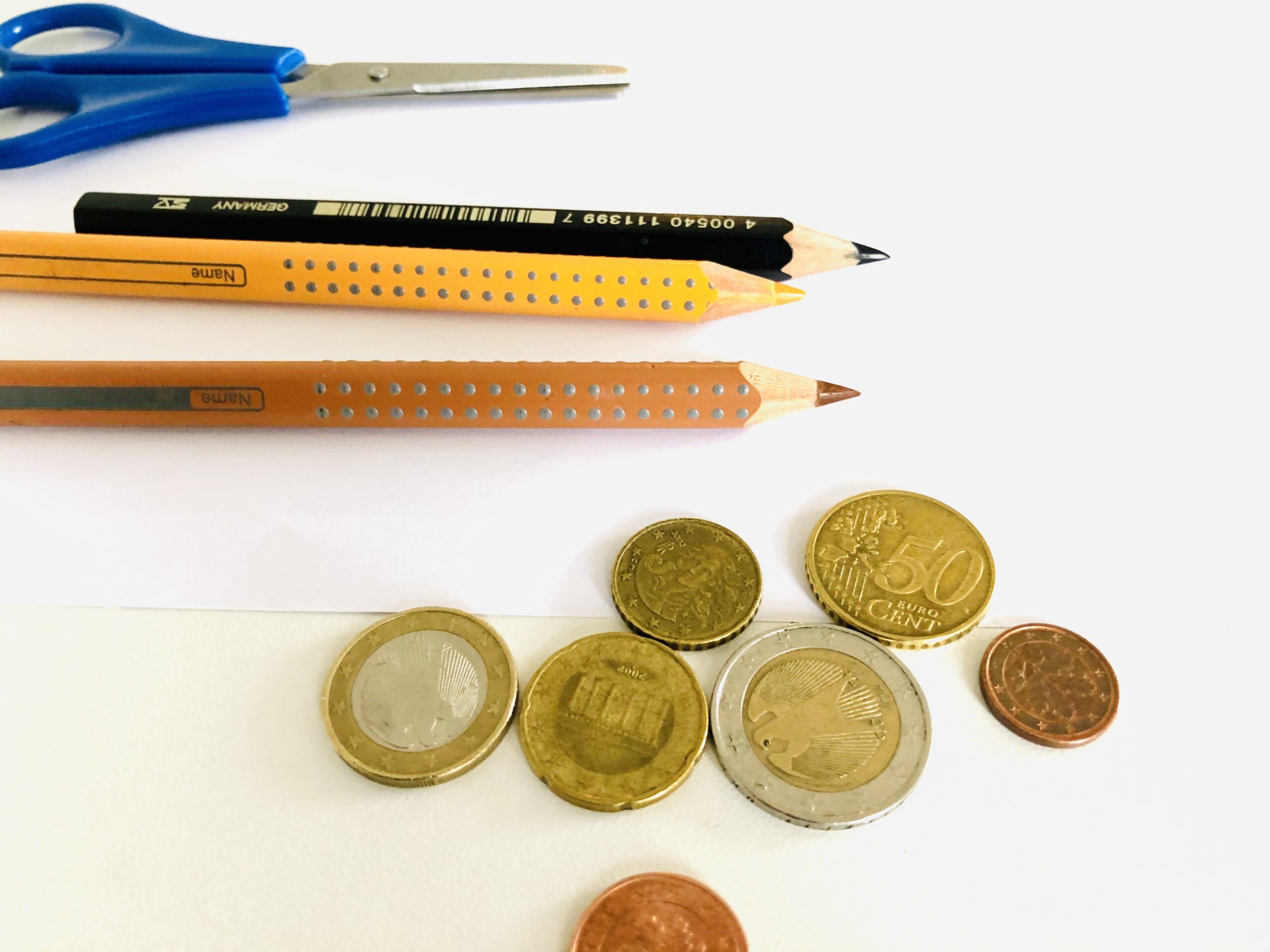
Then look at the coins. Look at the differences and select a coin.
Put this under the paper and press the edge. This creates a print.
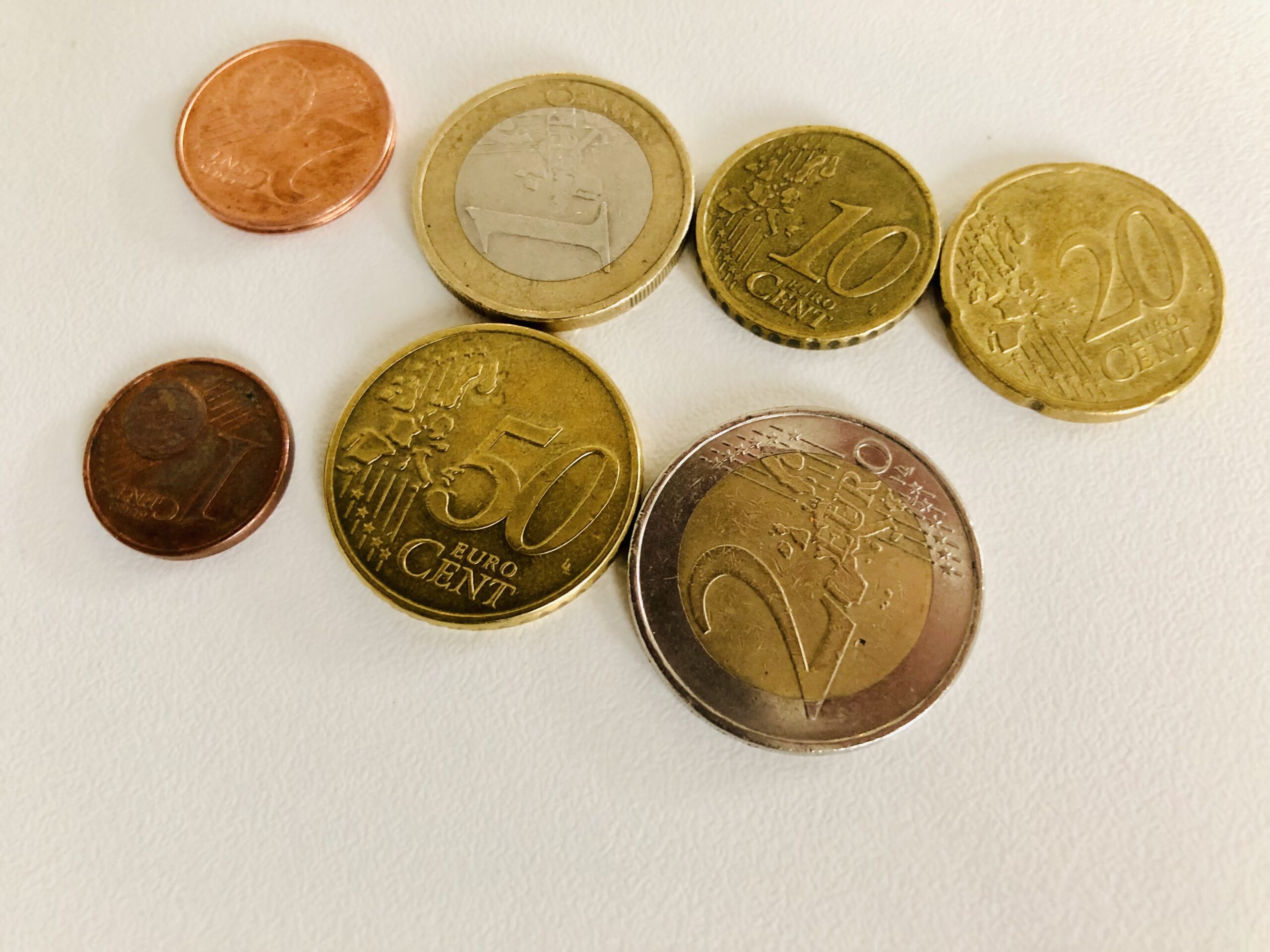


Hold the paper with your fingers so that the coin cannot move.
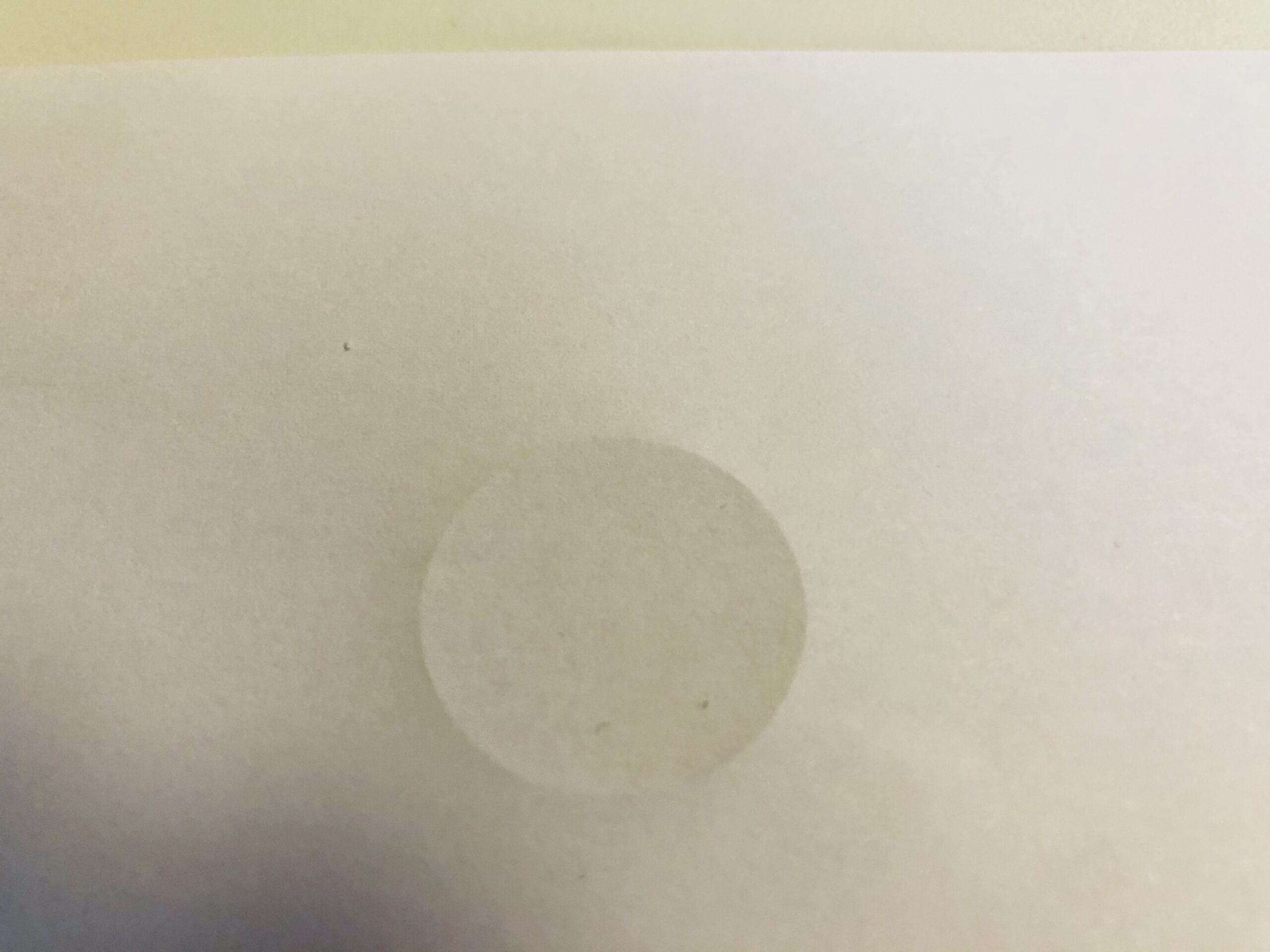


Then you put the pen flat and paint over the coin.
Tip: Show the children the hand holding of the pen first.



Paints so several coins and changes the colors depending on the color of the coin.
Paints the front and backs of the individual coins. Do you notice something? What is shown on the backs?



Then you cut out the coins.



Now you can put together the front and back sides of the coins that belong together and, for example, place them for the matching piece of money.
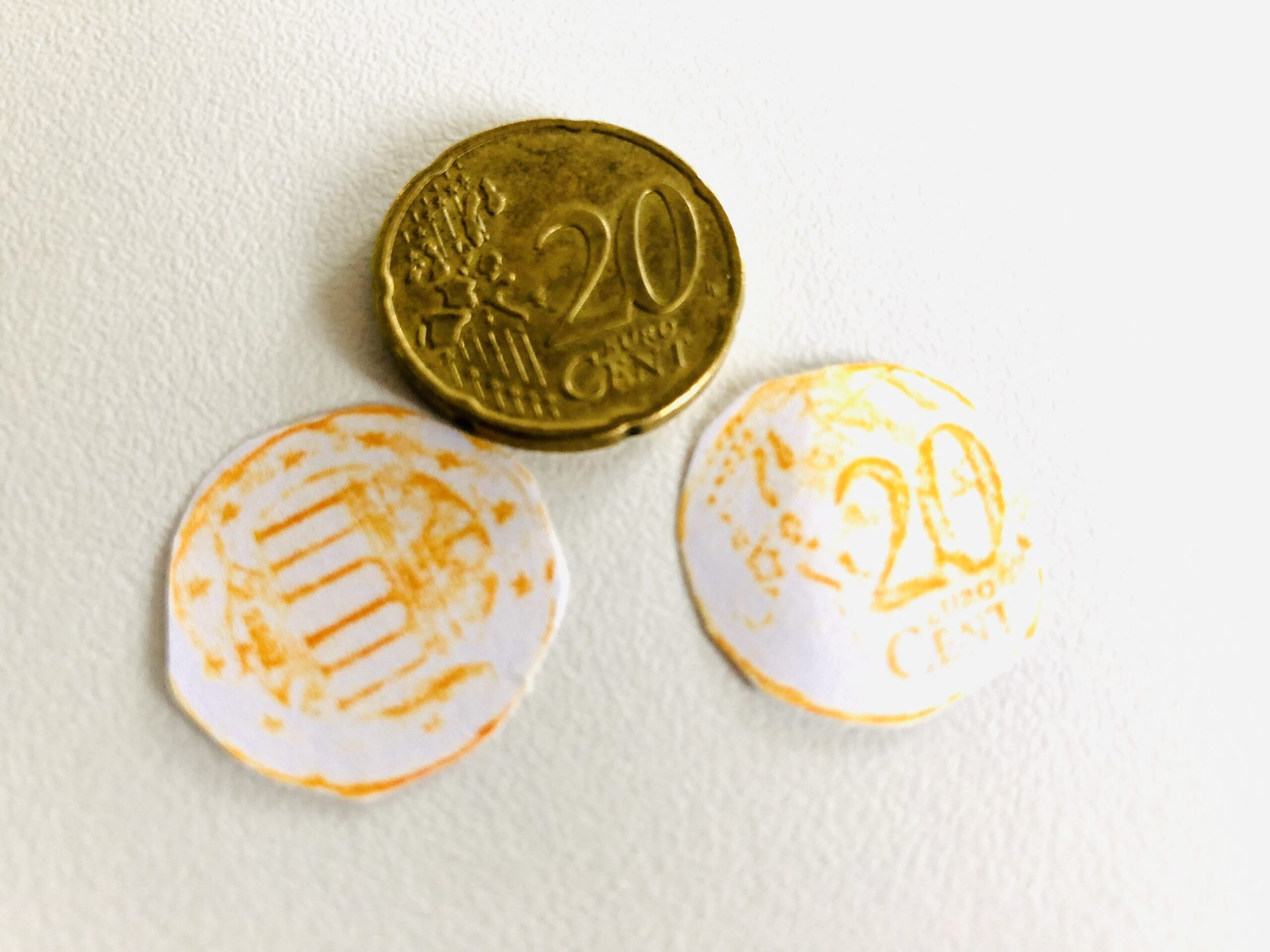


You can also glue the front and back with a glue pin, so a play coin with front and back is created.
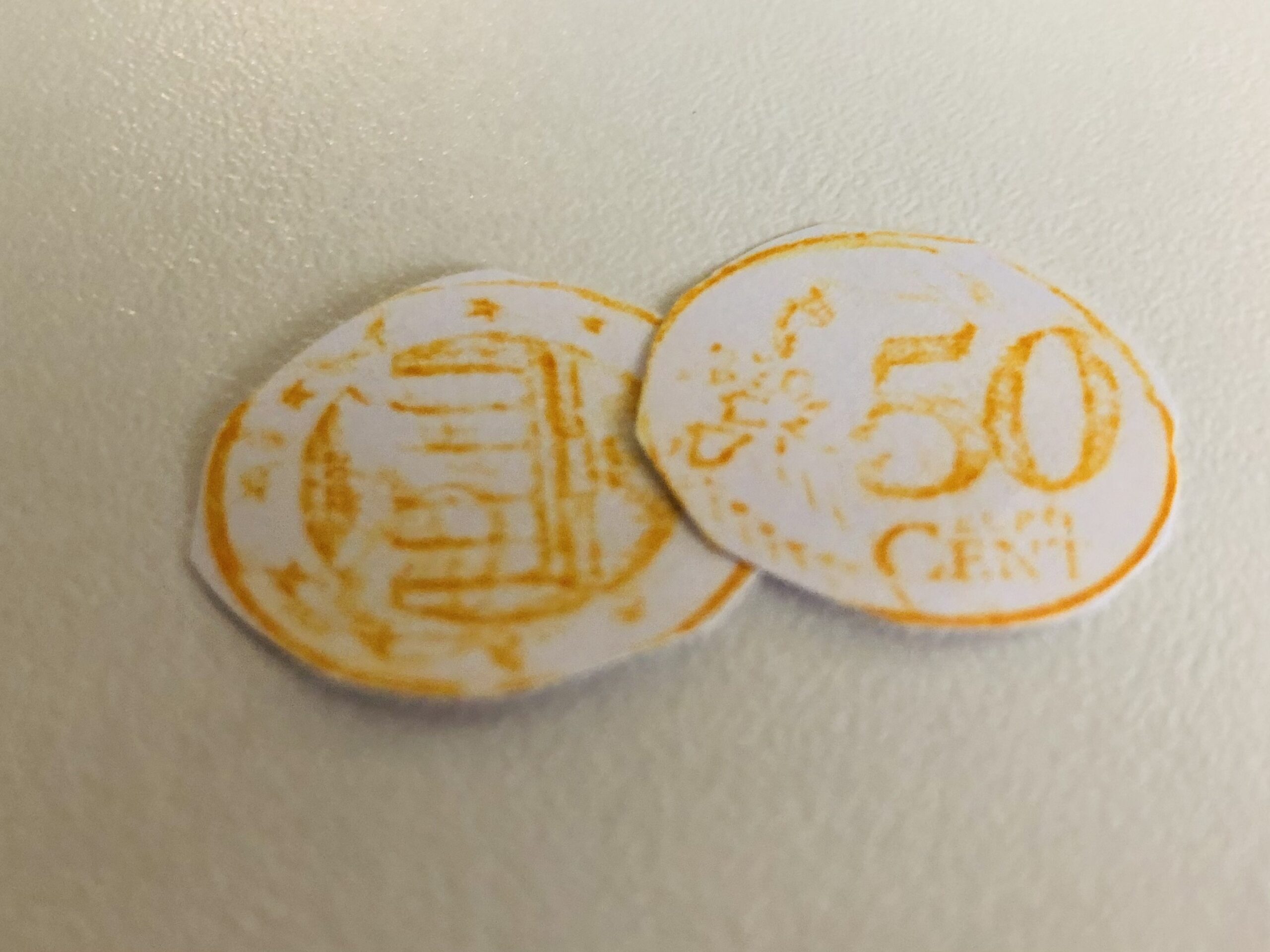


Maybe you have a children's purse or an old purse where you can sort the play money.
If you have a cash register at the shop, you can sort the coins there.
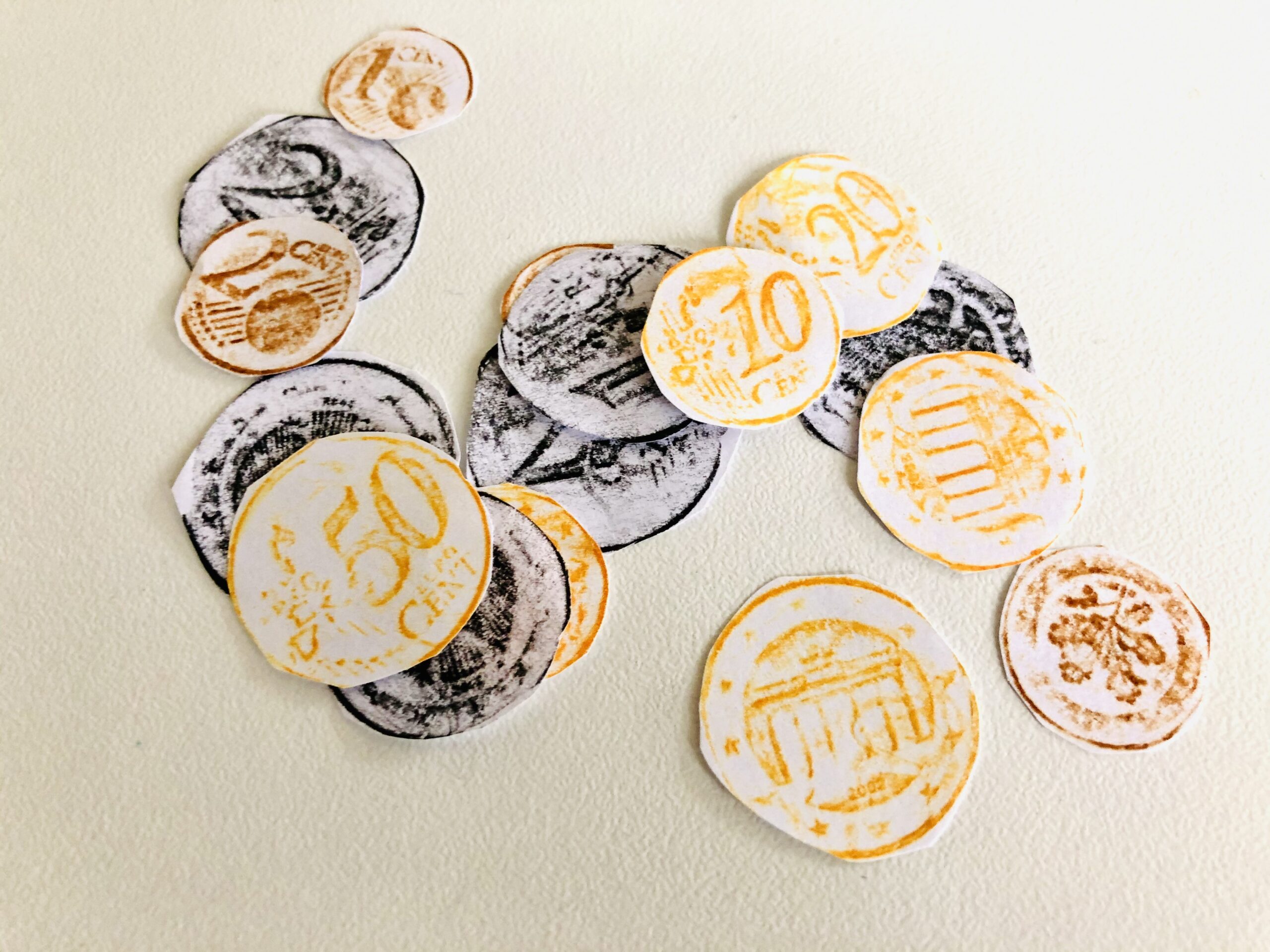


Now you can go shopping. What do you get for 1 euro? What for 20 cents?
Which coins do I need for 1 Euro 50? How do I get a Euro if I only have cent pieces?
Tip: Involves the handling of money in everyday life. For example, ask at dinner what a bread costs, when cleaning, what a sponge costs or when bathing what the bath supplement costs etc.
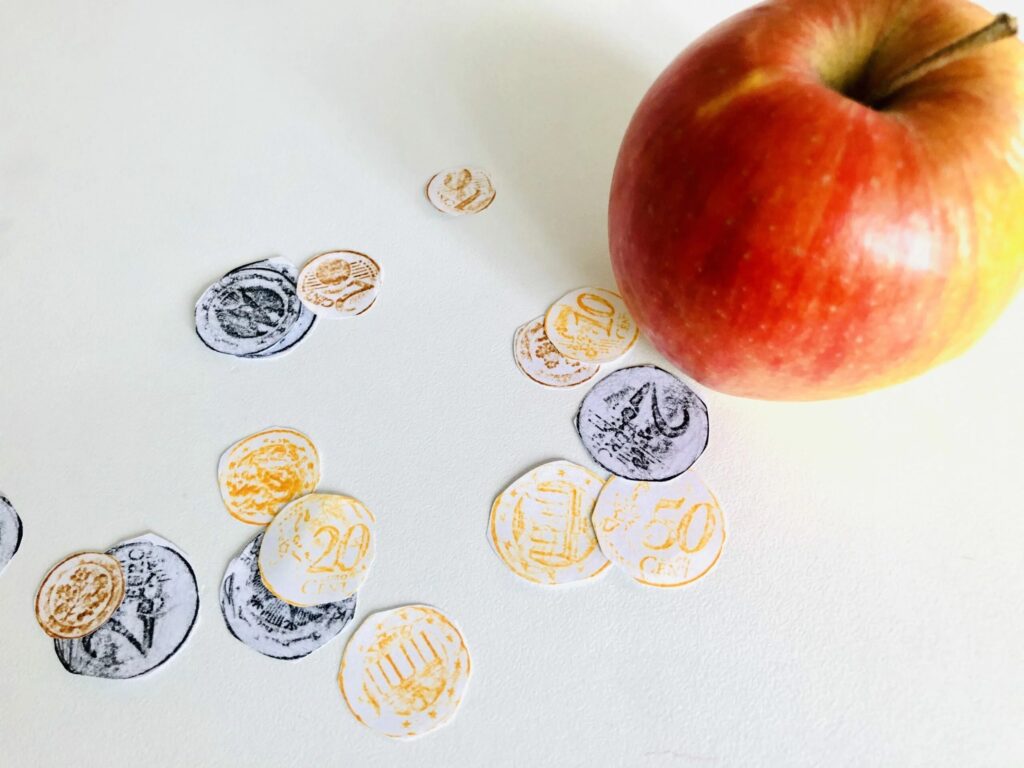


See for yourself how enthusiastic and concentrated the children deal with the coins, laying and arithmetic.
If you need more play money, which is also more robust, then order the play money free of charge from the Bundesbank under Order play moneyIn addition to the coins, there are also the notes and you can learn what the coins look like in the 19 other EU countries.
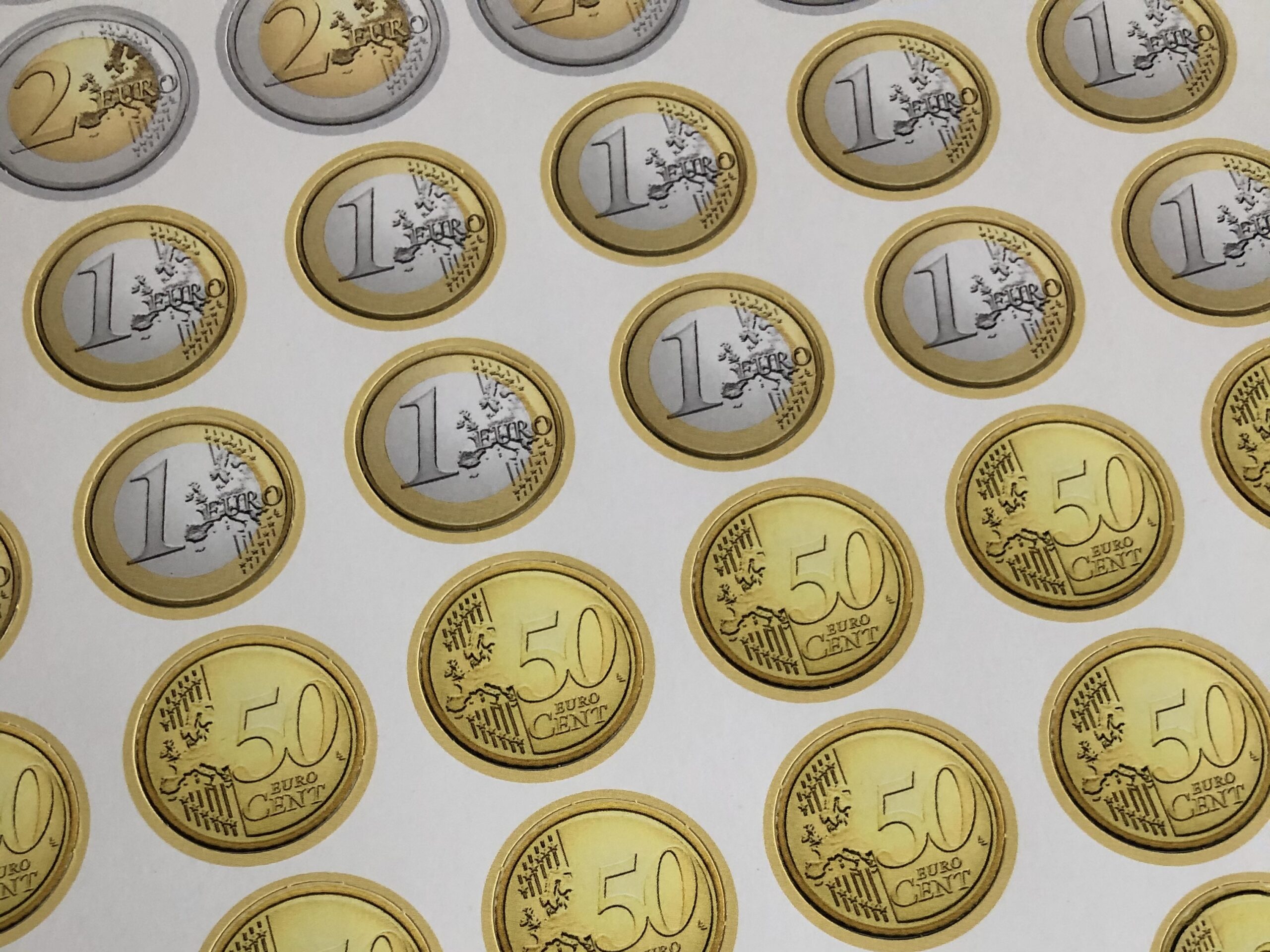


Have fun learning!
Materials
Directions
First find all the materials together and lay out the painting sheet.



Then look at the coins. Look at the differences and select a coin.
Put this under the paper and press the edge. This creates a print.



Hold the paper with your fingers so that the coin cannot move.



Then you put the pen flat and paint over the coin.
Tip: Show the children the hand holding of the pen first.



Paints so several coins and changes the colors depending on the color of the coin.
Paints the front and backs of the individual coins. Do you notice something? What is shown on the backs?



Then you cut out the coins.



Now you can put together the front and back sides of the coins that belong together and, for example, place them for the matching piece of money.



You can also glue the front and back with a glue pin, so a play coin with front and back is created.



Maybe you have a children's purse or an old purse where you can sort the play money.
If you have a cash register at the shop, you can sort the coins there.



Now you can go shopping. What do you get for 1 euro? What for 20 cents?
Which coins do I need for 1 Euro 50? How do I get a Euro if I only have cent pieces?
Tip: Involves the handling of money in everyday life. For example, ask at dinner what a bread costs, when cleaning, what a sponge costs or when bathing what the bath supplement costs etc.



See for yourself how enthusiastic and concentrated the children deal with the coins, laying and arithmetic.
If you need more play money, which is also more robust, then order the play money free of charge from the Bundesbank under Order play moneyIn addition to the coins, there are also the notes and you can learn what the coins look like in the 19 other EU countries.



Have fun learning!
Follow us on Facebook , Instagram and Pinterest
Don't miss any more adventures: Our bottle mail



